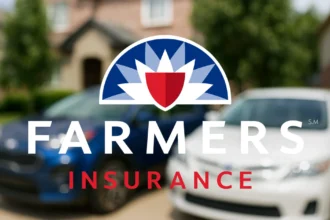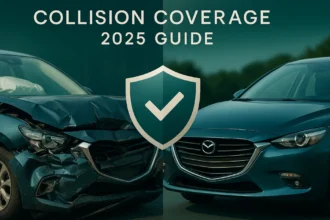
The Shocking Truth About Your Rising Insurance Bills
If you’ve opened your mortgage statement recently and felt your stomach drop at the homeowners’ insurance premium, you’re not alone. American homeowners are paying 37.8% more for insurance than they did just five years ago, according to LendingTree data. The average annual premium has skyrocketed to $2,285 nationwide, with some states seeing costs exceed $5,800 per year.
But here’s what most homeowners don’t realize: these increases aren’t random, and there are specific steps you can take today to dramatically reduce your premiums.
Why Homeowners Insurance Costs Keep Rising: The 8 Primary Drivers
Understanding why your premiums keep climbing is the first step to fighting back. Let’s examine each factor that’s driving up costs across America.
1. Climate Change and Extreme Weather Events
The single biggest reason homeowners’ insurance costs keep rising is the dramatic increase in severe weather damage. The data tells a stark story:
- 18 weather disasters caused over $1 billion in damage each in 2021 alone
- Severe weather now causes 39% of all U.S. home insurance claims, compared to the historical average of just 7 events annually from 1980-2020
- Two-thirds of homeowners report their insurance costs have increased, specifically due to natural disasters

Regional Impact Breakdown:
- Florida: Hurricane and flooding risks have caused multiple insurers to exit entirely
- California: Wildfire exposure led State Farm to stop accepting new applications
- Oklahoma: Tornado activity makes it the most expensive state at $5,858 annually
- Texas: Hail and windstorms drive premiums 40% above the national average
2. Construction Material Costs Surge
The pandemic exposed vulnerabilities in global supply chains, and homeowners are still paying the price. Building materials have increased an average of 26% – the largest single-year increase in construction industry history.
Key Material Cost Increases:
- Lumber: Up 180% at peak (still 45% above pre-pandemic levels)
- Copper wiring: Increased 35%
- Roofing materials: Up 28%
- Drywall: Increased 22%
This directly impacts your premiums because 93% of contractors report being affected by material price increases, which translates to higher replacement costs when you file a claim.
3. Labor Shortages Drive Up Reconstruction Costs
The skilled trades are facing a crisis that’s making your insurance more expensive:
- 89% of contractors struggle to find qualified workers
- 88% of construction firms experience project delays
- The electrical industry sees 10,000 electricians retire annually, but only 7,000 new workers enter the field

These shortages mean longer repair times and higher labor costs, both of which increase insurance payouts and drive up premiums for everyone.
4. Modern Homes Burn Faster and Cost More to Rebuild
Here’s a surprising factor: newer homes actually burn nearly 6 times faster than older homes due to synthetic materials and open floor plans, according to Underwriters Laboratories research.
The result? Average fire losses increased 1.5 times from $16,300 per fire in 1980 to $24,700 in 2020 (adjusted for inflation). When fires cause more total losses, everyone’s premiums increase.
5. Water Damage Claims Are Exploding
Water damage has become increasingly expensive and frequent:
- 1 in 50 insured homes files a water damage claim annually
- Average water damage claims cost $10,900
- Water damage losses increased more than 10% from 2017-2019

6. Luxury Home Improvements Increase Replacement Costs
American homeowners are investing heavily in high-end renovations:
- 62% of design firms report increased project scope and size
- The luxury home improvement market grew 30% in recent years
- Custom features like granite countertops, hardwood floors, and finished basements require specialized replacement
When your home’s value increases through renovations, your replacement cost coverage must increase proportionally.
7. Insurance Company Profitability Pressures
Insurance companies face their own financial challenges:
- Below-average returns on stock and bond investments over the past two years
- Higher administrative costs, including employee wages and benefits
- Increased reinsurance costs as global insurers raise rates
These companies must maintain profitability for shareholders, and when their costs rise, they pass them to policyholders.
8. Individual Risk Factors That Spike Your Rates
Several personal factors can cause your specific premiums to increase beyond general market trends:
Claims History Impact:
- Claims stay on your CLUE report for 7 years
- Some insurers raise rates up to 10% after a single claim
- Multiple claims can label you as “high-risk”
Credit Score Effects:
- Poor credit can increase premiums by up to 50% in most states
- Only California, Maryland, and Massachusetts prohibit credit-based pricing
How Your Location Dramatically Affects Costs
Your zip code is one of the biggest factors in determining why homeowners’ insurance costs keep rising for your specific property.
Most Expensive States for Homeowners Insurance (2025)
| State | Average Annual Premium | Primary Risk Factors |
| Oklahoma | $5,858 | Tornadoes, hailstorms |
| Kansas | $4,312 | Severe weather, tornadoes |
| Texas | $4,456 | Hurricanes, hail, floods |
| Louisiana | $4,180 | Hurricanes, flooding |
| Florida | $4,231 | Hurricanes, sinkholes |
Least Expensive States
| State | Average Annual Premium | Why It’s Cheaper |
| Hawaii | $1,190 | Low natural disaster risk |
| Delaware | $1,308 | Mild weather patterns |
| Utah | $1,425 | Low crime, stable weather |
| Vermont | $1,523 | Rural, low claim frequency |
The Hidden Costs Most Homeowners Miss
Beyond the obvious premium increases, there are several hidden ways that rising insurance costs impact your wallet:
Mortgage Payment Increases: Your escrow account must adjust annually to cover higher premiums, often catching homeowners off-guard with payment increases of $50-200 monthly.
Coverage Gaps: As replacement costs rise faster than coverage limits, many homeowners unknowingly become underinsured, leaving them vulnerable to out-of-pocket expenses after a claim.
Market Exits: When insurers leave high-risk markets, remaining options become more expensive with fewer coverage choices.
7 Proven Strategies to Lower Your Homeowners Insurance Premiums
Despite rising costs industry-wide, you can still significantly reduce your premiums with these expert-backed strategies:
1. Increase Your Deductible Strategically
Potential Savings: 6-25% annually
Raising your deductible from $500 to $1,000 reduces premiums by an average of 6%, while increasing it to $2,500 can save 15-25%. Ensure you have adequate emergency savings to cover the higher deductible.
2. Bundle Your Policies
Potential Savings: 10-25% annually
Most insurers offer significant discounts for bundling home and auto insurance. Shop around as bundle savings vary dramatically between companies.
3. Invest in Home Security
Potential Savings: $100+ annually
Security systems, smart home devices, and professional monitoring can reduce premiums substantially:
- Burglar alarms: 5-20% discount
- Smart water leak detectors: 5-15% discount
- Professional monitoring: Additional 5-10% discount

4. Maintain Excellent Credit
Potential Impact: Up to 50% savings
In states that allow credit-based pricing, excellent credit (750+) can qualify you for the lowest rates. Pay bills on time and keep credit utilization below 10%.
5. Shop Around Annually
Potential Savings: 15-40% annually
Insurance rates vary dramatically between companies. The same coverage that costs $3,000 with one insurer might cost $1,800 with another. Get quotes from at least 3-5 insurers annually.
6. Take Advantage of Lesser-Known Discounts
Many insurers offer discounts that most homeowners don’t know about:
- Paperless billing: 2-5% discount
- Early signing: 5-10% discount
- Military/veteran: 10-15% discount
- Senior citizen: 5-12% discount
- Claims-free: 15-25% discount after 3-5 years
7. Review and Adjust Coverage Annually
Update dwelling coverage to reflect current reconstruction costs, but avoid over-insuring. Review personal property limits and consider whether you need full replacement cost or actual cash value coverage.
Common Mistakes That Cost Homeowners Thousands
Avoid these expensive errors when managing your homeowners’ insurance:
Mistake 1: Accepting Auto-Renewal Without Shopping. Many homeowners stick with the same insurer for decades, missing potential savings of hundreds or thousands annually.
Mistake 2: Under-Insuring to Save Money. Choosing inadequate coverage limits can leave you financially devastated after a major claim.
Mistake 3: Filing Small Claims. Filing multiple small claims can label you as high-risk. Consider paying out-of-pocket for claims under $2,000.
Mistake 4: Ignoring Home Maintenance. Delayed maintenance can lead to larger problems and higher premiums. Regular upkeep demonstrates lower risk to insurers.
What Experts Predict for 2025 and Beyond
Industry experts forecast continued premium increases, but the rate of increase may slow:
- 2025 increases: Expected 6-9% nationally
- High-risk states: Could see 10-15% increases
- Market stabilization: Possible by 2026-2027 as supply chains normalize
Expert Tip: “The homeowners who fare best in this market are those who actively manage their insurance like any other major expense – shopping annually, maintaining their homes, and understanding their coverage,” says insurance industry analyst Sarah Thompson from the Insurance Information Institute.
Take Action: Your Next Steps to Lower Insurance Costs
The rising cost of homeowners’ insurance isn’t going away, but you don’t have to be a victim of it. Here’s your action plan:
Immediate Actions (This Week):
- Review your current policy and coverage limits
- Document home improvements and security features
- Gather quotes from 3-5 different insurers
- Check for unused discounts on your current policy
Medium-term Actions (Next 3 Months):
- Consider increasing your deductible if you have adequate savings
- Install security or smart home devices
- Address any home maintenance issues
- Review and improve your credit score
Long-term Actions (Next 12 Months):
- Make strategic home improvements that reduce risk
- Build emergency savings to support higher deductibles
- Reassess coverage needs annually
- Stay informed about market changes in your area
The Bottom Line: Take Control of Your Insurance Costs
While you can’t control weather patterns, construction costs, or insurance company profits, you can control how much you pay for homeowners’ insurance. The average American family can save $300-800 annually by implementing the strategies outlined in this guide.
Remember: Insurance rates change constantly, and the company offering the best rate today may not be the cheapest option next year. Make shopping for insurance an annual habit, just like reviewing your other major expenses.
The key to managing rising homeowners insurance costs isn’t to simply accept them as inevitable – it’s to become an informed, proactive consumer who understands the market and takes action to secure the best possible rates.
Ready to start saving? The companies offering the most competitive rates are actively competing for your business right now. Compare quotes from multiple insurers today to see how much you could save on your homeowners insurance.
Frequently Asked Questions About Rising Homeowners Insurance Costs
Q: Why is my homeowners’ insurance going up when I haven’t filed any claims?
A: Insurance premiums are based on collective risk across all policyholders, not just your individual claim history. Even if you haven’t filed claims, your rates can increase due to overall industry factors like severe weather in your region, increased construction costs, and higher claim frequencies among other policyholders.
Q: Can my insurance company raise my rates without notice?
A: Insurance companies must provide advance written notice before increasing your rates, typically 30-60 days, depending on your state’s regulations. However, they can raise rates at renewal time as long as proper notice is given.
Q: Should I switch insurance companies if my rates increase?
A: You should shop around annually regardless of rate increases. A rate increase with your current insurer might still leave you with competitive pricing compared to other companies, or it might signal it’s time to switch. Always compare coverage levels, not just prices.
Q: Are there any states where homeowners’ insurance costs are decreasing?
A: While national trends show increases, some individual markets may see temporary decreases due to increased competition or favorable weather years. However, long-term trends indicate continued increases across most U.S. markets due to climate change and inflation.
Q: How much should I expect my homeowners’ insurance to increase each year?
A: Industry experts predict annual increases of 6-9% nationally through 2025, though high-risk states may see increases of 10-15%. Your individual increase depends on your location, claims history, and insurer.
Q: Is it worth it to file a claim if the damage is close to my deductible amount?
A: Generally, it’s not advisable to file claims for amounts only slightly above your deductible. Consider the long-term impact on your rates – a $2,000 claim today might cost you more in increased premiums over the next 3-5 years.
Q: Can I negotiate my homeowners’ insurance rates?
A: While you typically can’t negotiate rates directly, you can work with your agent to find all available discounts, adjust your coverage to optimize costs, and ensure you’re getting credit for risk-reduction measures like security systems or home improvements.
Q: How do I know if I have enough coverage as replacement costs increase?
A: Review your dwelling coverage annually and compare it to local construction costs per square foot. Many insurers offer guaranteed replacement cost coverage that automatically adjusts for inflation, which can provide better protection than fixed coverage amounts.
Q: What’s the difference between market value and replacement cost?
A: Market value is what someone would pay to buy your home, while replacement cost is what it would cost to rebuild your home from scratch using current materials and labor prices. Replacement cost is typically what matters for insurance coverage and is often higher than market value.
Q: Are there any government programs to help with rising insurance costs?
A: Some states offer fair access to insurance requirements (FAIR) plans for high-risk properties, and certain areas may have federal programs for flood insurance. However, these are typically more expensive than private market options and serve as insurers of last resort.





